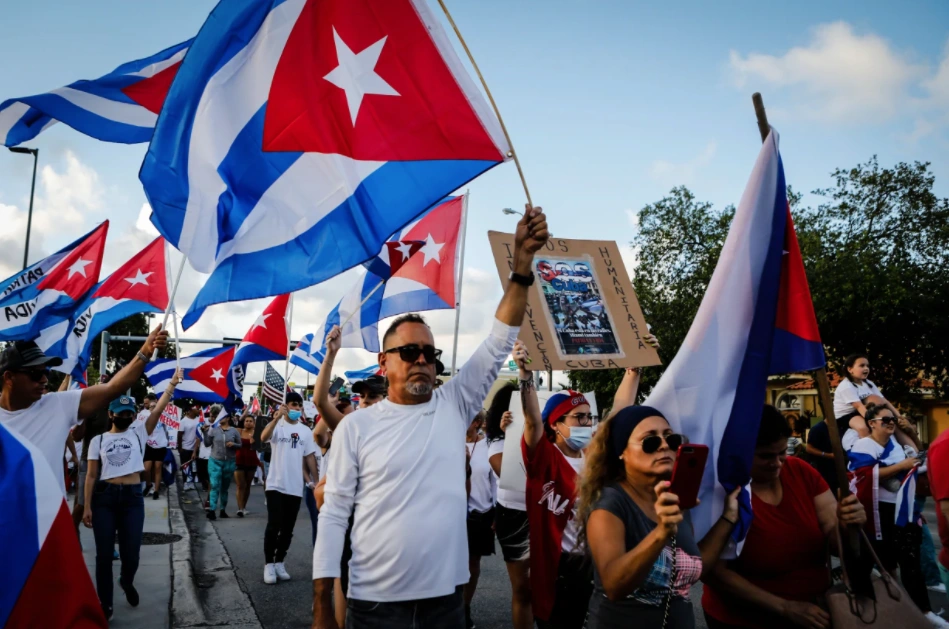Last year’s July demonstrations in Cuba—one of the largest since the beginning of the 1959 revolution—erupted, in part, due to the health crisis caused by the COVID-19 pandemic, the shortage, and rationing of food and medicine and the restrictions on freedom of speech and assembly. These mobilizations, which took the regime by surprise, reopened a series of expectations about the possibilities of a democratic transformation of the Cuban regime.
But how could we imagine such a transition process on the island? What would be the alternatives, considering the various experiences of transition in non-democratic regimes? Bearing in mind the centrality of the processes of economic liberalization and political democratization, there are three major alternative scenarios. A democratization of the regime, an economic opening without political democratization in the style of Vietnam, or a change of leadership without structural changes, which could be dubbed a “camporization/balaguerization” of the Cuban political regime.
A path toward democratization would mean a change of political regime that could include, or not include, a transformation of its productive-organization model. It could be a transition to a democracy, without a necessary transition to a market economy like those processes that took place in Latin America during the 1980s. Or the transition could involve a double transition, as occurred in Eastern European countries in the 1990s, from totalitarian regimes to democratic regimes and from planned economies to market economies.
The second path, which we could call a “Vietnamization” of the Cuban regime, would involve a transition from a planned to a decentralized economy, but without a change in the political regime. The process of economic liberalization in Vietnam began in 1986 with a reform process known as Do Moi. With that, the Southeast Asian country legalized the creation of enterprises and then expressly encouraged them with the aim of creating a free market regime.
This transition began with basic reforms in collectivized agriculture and was gradually extended to different sectors that significantly diversified its economy. Vietnam also established a foreign investment law, normalized its relationship with the rest of the world’s nations—including its former rival the U.S.—and privatized many of its state-owned enterprises.
However, this process of economic opening wasn’t accompanied by a change in the political regime. The Vietnamese Communist Party carried out the economic changes, while reaffirming its political primacy in the country and the mystique surrounding its heroic past, although no longer with pro-Soviet overtones.
The last way would be the “camporization/balaguerization” of the regime, which would entail a change in the political leadership. Whether it be a “regent” under the ideological and political tutelage of the leader, as was the case of General Perón’s personal delegate, Héctor J. Cámpora, in Argentina; or a successor who assumes a direction towards autonomization—in the face of the physical disappearance or retirement of the natural referent of the old regime—as was the case of Joaquín Balaguer. He succeeded the assassinated Rafael Leónidas Trujillo and gradually displaced his heirs from power in the Dominican Republic. The ongoing process doesn’t seem to have yet been resolved, at least in the short term: the dilemma of finding ourselves with a mere personal delegate like Cámpora or a leader who is acquiring a greater degree of autonomy like Balaguer. In any of these situations, both the possibility of economic liberalization and political democratization are absent.
Having analyzed these three possible transitional paths, could Cuba take its own route to political democratization? This will depend on some fundamental factors.
First, the strengthening of civil society and its consequent construction of a political society. Secondly, the willingness of social and political actors to cooperate and establish minimum rules of coexistence. Thus, the agreements of Punto Fijo, Frente Nacional or Moncloa could serve as a reference even under different conditions. It will also depend on the future relationship that the political system establishes with the Armed Forces in the search to create an environment of mutual and generous concessions. Perhaps, the experience of the peace process in Colombia could be a reference. Finally, the reestablishment of an international environment that is more favorable to democracy is key, although currently it remains to be seen.
While there have been numerous successful transitions over the last decades, the roles of the State and the Armed Forces in society, the organizational weakness of the opposition, the absence—or weakness—of a democratic tradition and the international context are aspects that hinder the possibility of any transition. Therefore, the political and economic transition implies an enormous challenge for Cuba.
Translated from Spanish by Ricardo Aceves













